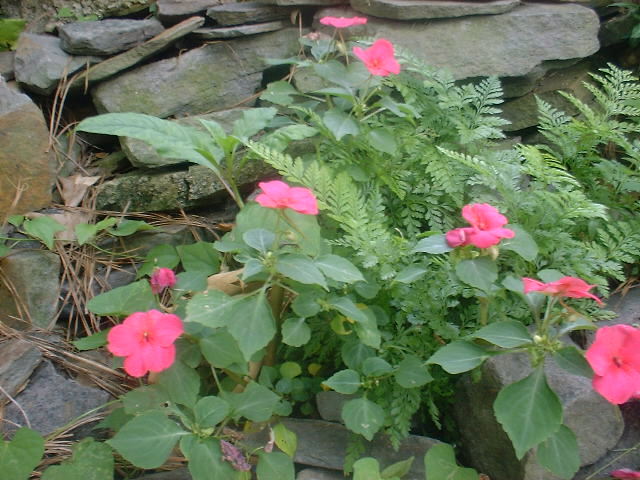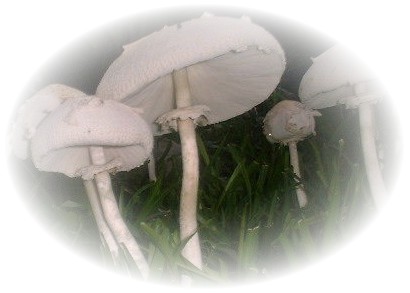 Every
home has a place for at least a small shade garden. While the full-sun
vegetable and perennial gardens also have their functions, nothing takes
the place of a tranquil, quiet corner of the yard with sweet scents, almost
fluorescent colors, and best of all, cool shade. Contrary to popular
belief, a shade garden can be host to an astounding number of flowering
and foliage plants. We have all heard friends bemoan the fact that
their yard is mostly shady and "nothing will grow." That couldn't
be farther from the truth - there is a huge selection of suitable plants,
shrubs, ground covers, and even under-story trees that will do beautifully
in even fairly dense shade.
Every
home has a place for at least a small shade garden. While the full-sun
vegetable and perennial gardens also have their functions, nothing takes
the place of a tranquil, quiet corner of the yard with sweet scents, almost
fluorescent colors, and best of all, cool shade. Contrary to popular
belief, a shade garden can be host to an astounding number of flowering
and foliage plants. We have all heard friends bemoan the fact that
their yard is mostly shady and "nothing will grow." That couldn't
be farther from the truth - there is a huge selection of suitable plants,
shrubs, ground covers, and even under-story trees that will do beautifully
in even fairly dense shade.
This brings us to the issue of the shade itself. Every landscape differs
in where and what type of shade it holds. Observation is the best
way to deduce what the needs for your particular yard are, but some general
guidelines are as follows.
Light Shade is an area where as the sun moves across the sky, the
areas of shade move along with it. These areas get a lot of light
in intervals during the day. Some full-sun plants will do just fine
in these conditions, and depending on the location and climate (such as
the deep South), they may actually appreciate the intermittent relief from
the hot sun.
Open Shade is the shade you would find on the northern side of a
house, or under an open-ended covered porch. Many plants will do just
fine under these conditions, but bona-fide full-sun lovers may not do well
here.
Medium Shade is found under decks and in northern-facing areas with
a structure or tree blocking the available sunlight. This situation
is where the dividing line really starts between full-sun and full-shade
plants.
Deep Shade is easy to spot. It's that area in the yard that
gets essentially no light at all, due to structures, thick hedging, or what
have you. The plant selection becomes much more limited when faced
with deep shade, but there are still enough available choices to make it
an attractive, cool, and inviting space for living.
 These
categories will dictate where a plant belongs for the purposes of this page
as we sort through appropriate plants and where to put them. I will
be adding a list of plants and enlarging the lists almost daily, so Bookmark
this page and return often - and when you do create that shade garden of
your dreams, be sure to pause and look at all the neat little things that
Mother Nature chooses to add to the scene.
These
categories will dictate where a plant belongs for the purposes of this page
as we sort through appropriate plants and where to put them. I will
be adding a list of plants and enlarging the lists almost daily, so Bookmark
this page and return often - and when you do create that shade garden of
your dreams, be sure to pause and look at all the neat little things that
Mother Nature chooses to add to the scene.
As
a note, in some cases, individual shade plants may also be important annuals,
biennials, perennials, and herbs. In these cases, I have listed them
in multiple categories so they won't be overlooked. This is a large
website, and it is very difficult to cross-reference everything and still
have room for the subject matter. I have done my best, but don't forget
about the backspace buttons if you find yourself in an unintended category.
 These
categories will dictate where a plant belongs for the purposes of this page
as we sort through appropriate plants and where to put them. I will
be adding a list of plants and enlarging the lists almost daily, so Bookmark
this page and return often - and when you do create that shade garden of
your dreams, be sure to pause and look at all the neat little things that
Mother Nature chooses to add to the scene.
These
categories will dictate where a plant belongs for the purposes of this page
as we sort through appropriate plants and where to put them. I will
be adding a list of plants and enlarging the lists almost daily, so Bookmark
this page and return often - and when you do create that shade garden of
your dreams, be sure to pause and look at all the neat little things that
Mother Nature chooses to add to the scene.